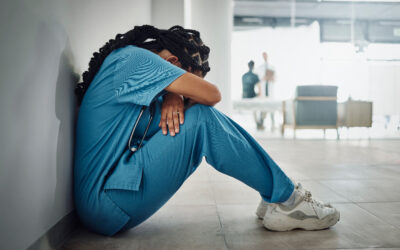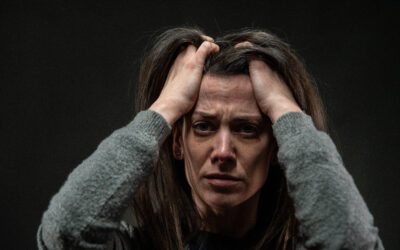Mental health is different for everyone, and so are mental health issues. Even if two people have the same diagnosis, that doesn’t mean that they’re living with the same symptoms. That’s why it’s not always easy to recognize mental health disorders, like bipolar disorder, in yourself or other people.
Bipolar disorder is a mental health disorder that affects about 2.6% of the adult U.S. population, adding up to 5.7 million people. While it’s not more prevalent in any gender, there are differences in how the symptoms manifest in different genders. What bipolar disorder symptoms are common in females? That’s what we’re here to answer.
Read on to learn about the basics of bipolar disorder, how it can differ among genders and the most common bipolar disorder symptoms in females (though other genders may experience them as well).
What is bipolar disorder?
Bipolar disorder, formerly known as manic-depressive disorder, is a mood disorder that causes severe mood swings. These periods of unusual energy and activity are referred to as episodes. Bipolar disorder episodes go back and forth between manic highs and depressive lows. The severe mood changes make it difficult to not only manage your emotions, but also maintain healthy relationships and complete your day-to-day routines.
Manic episodes for bipolar disorder can last up to one week and cause unusually high levels of energy, heightened irritability and risky behavior that’s unusual for your personality. Depressive episodes can last for more than two weeks and cause overwhelming feelings of sadness, insomnia and concentration issues.
Most people with this mood disorder are diagnosed with bipolar 1 or bipolar 2. If you have bipolar 1, you experience extreme switches between manic highs and depressive lows. Bipolar 2 consists of longer periods of emotional stability between episodes than bipolar 1. Instead of manic episodes, bipolar 2 causes hypomania, which refers to more muted symptoms than bipolar 1.
There’s also the possibility of having cyclothymic disorder. This refers to patterns of behaviors and symptoms that don’t fit the criteria of a bipolar disorder diagnosis. The episodes for people with cyclothymic disorder can last longer than a year.
How bipolar disorder symptoms can differ among genders
All bipolar disorder diagnoses are characterized by manic/hypomanic and depressive episodes. But the mental health disorder doesn’t affect different genders the same way. There are actually notable differences between how bipolar disorder symptoms manifest among genders including:
- Different onset age — The average age of onset for bipolar disorder is about 25, but males tend to have an earlier onset than females. Males may experience their first bipolar episode four to five years earlier than females.
- Affected by reproductive cycles — Females with bipolar disorder often experience symptoms that worsen during different points in their reproductive cycles, such as PMS and postpartum.
- Bipolar 1 vs. 2 — Females are more likely to be diagnosed with bipolar 2 than bipolar 1. Since bipolar 2 has hypomania instead of manic episodes, the depressive lows are much more prevalent. That’s why females are often misdiagnosed with major depressive disorder.
7 top bipolar disorder symptoms in females (as well as other genders)
Bipolar disorder is characterized by episodes that have similar symptoms for all genders. Even though any bipolar disorder symptom can affect any gender it’s important to be aware of the most common bipolar disorder symptoms in females to ensure a proper diagnosis.
Here are seven of the most common bipolar disorder symptoms in females (that can also affect other genders):
- Heightened irritability
- Difficulty with concentration and proper judgment
- Impulsive behavior
- Increased anxiety
- Panic attacks
- Psychosis
- Suicidality
Most of the symptoms occur during specific episodes, though females are likely to experience manic and depressive symptoms at the same time.
Find treatment for your bipolar disorder symptoms at Lightfully Behavioral Health
Bipolar disorder symptoms can interfere with your quality of life regardless of your gender. If you’re experiencing bipolar disorder symptoms, it’s important to seek treatment to help you on your mental health journey and work toward a healthy, fulfilling future. That’s where we come in.
You can find treatment for bipolar disorder symptoms in our four programs: Residential Treatment, Virtual Intensive Outpatient Program (vIOP), Intensive Outpatient Program (IOP), and Partial Hospitalization Program (PHP), also called our Day Treatment Program.
Change is possible. When you’re ready to treat your bipolar disorder symptoms, reach out to our Admissions Concierge Team. We’ll take the next steps together, toward the fullest, brightest version of you.





